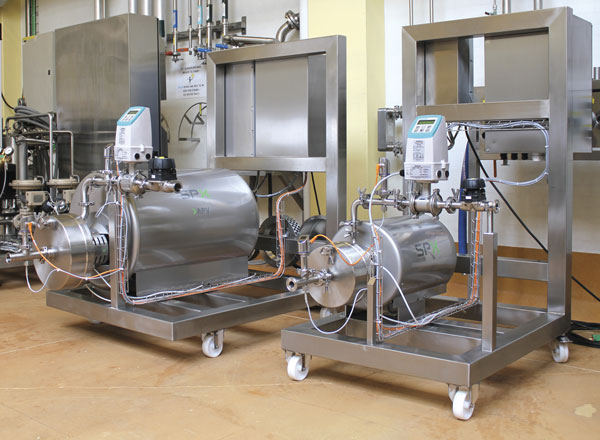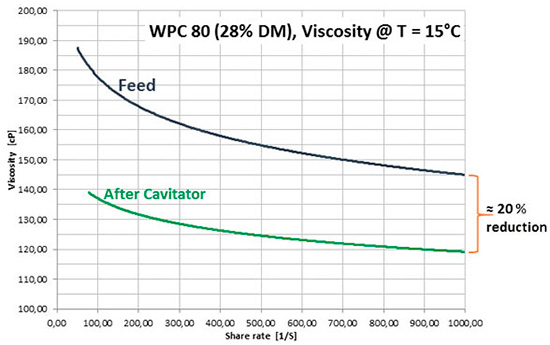With the rising global demand for milk- and whey-based powder ingredients for a wide range of applications across the dairy, food and beverage industries, nutritional dairy powder is a quickly growing segment. Many factors are driving market trends, including a growing youth population, increased spending power in emerging markets and the crossover of dairy nutrition into the high-growth nutritional beverage market.
 Image 1. The cavitator has multiple applications including pre-treatment and structural conditioning of milk and whey. (Images and graphics courtesy of SPX Flow Technology)
Image 1. The cavitator has multiple applications including pre-treatment and structural conditioning of milk and whey. (Images and graphics courtesy of SPX Flow Technology)An increasing demand from consumers for more nutritional products that are natural, functional, healthy, tasty and convenient is leading to expanded application requirements. Combined with highly competitive marketplaces and environmental pressures, new and innovative processing technologies are needed.
Hydrodynamic Cavitation Technology
Hydrodynamic cavitation technology uses a rotor with precisely machined cavities spinning in a liquid chamber that generates controlled cavitation. The process creates and collapses bubbles because of the decrease and then increase in pressure produced. As the bubbles collapse, a powerful energy wave is released into the surrounding liquid. This cavitation shockwave creates an efficient, microscopic mixing effect, and the rotor/liquid friction generates controllable, scale-free heating.
One cavitator can be incorporated into multiple applications, including pre-treatment and structural conditioning of milk and whey that can enhance process efficiency, powder hydration and functionalization, scale-free heating, emulsification and gas dispersion (see Table 1).
 Table 1. Cavitator technology applications
Table 1. Cavitator technology applicationsViscosity Reduction & Structural Conditioning
Viscosity and other factors such as the microstructural condition in whey, milk and other food products or concentrates set the limit for solids levels and efficiency in performance of spray drying, as well as other core processing applications such as membrane filtration, thermal treatment and evaporation.
These specific cavitators have shown combined viscosity reduction and microstructural conditioning. The viscosity reduction (temporarily) enables an increase in the solid levels during the spray drying and other key processes, significantly reducing the operational cost and improving sustainability. Table 2 shows a viscosity reduction of 20 percent in whey protein concentrate (WPC) 80. With a high viscosity caseinate product, the cavitator can increase the solids levels by more than 15 percent before drying. The solid component's particle structure, size and distribution also affect drying efficiency and performance. One cavitator has proven effective with deagglomeration and the formation of smaller particles and homogenous distribution.
 Table 2. This shows a viscosity reduction of 20 percent in whey protein concentrate WPC 80.
Table 2. This shows a viscosity reduction of 20 percent in whey protein concentrate WPC 80.Gas injection can have a positive impact on drying performance. These cavitators have demonstrated an efficient gas dispersion in, for example, coffee extract with a positive effect on the drying performance and functional properties of the end product.
Conclusions
Controlled hydrodynamic cavitation offers many benefits and versatility in the growing yogurt market space. The scale-free heating it provides is ideal for use with high-fouling products and can increase running time and reduce required clean-in-place (CIP) cycles.
It provides excellent microscopic mixing and dispersion with efficient hydration, emulsification and gas dispersion. The viscosity reduction and structural conditioning of milk and whey concentrates significantly impact the process efficiency in spray drying. Overall, this technology can reduce operational costs and provide higher end product quality.


